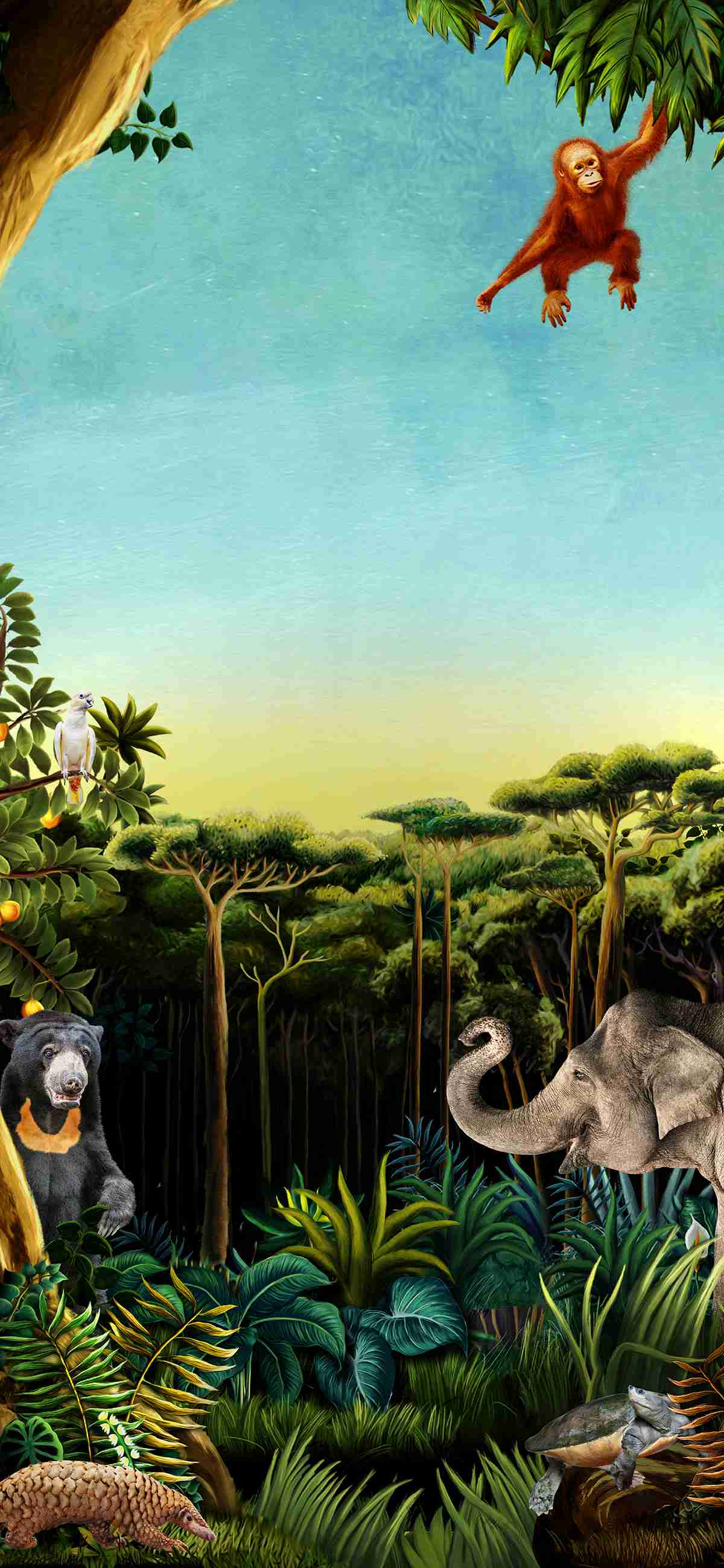Nearly 70 species of wildlife observed using Mandai Wildlife Bridge since its opening in 2019
3 FEB 2022
Male sambars sparring on the Mandai Wildlife Bridge.
Photo credit: Mandai Wildlife Bridge

Long-tailed macaques grooming an infant on the Mandai Wildlife Bridge.
Photo credit: Mandai Wildlife Group
Monitoring data over the past 18 months has revealed that nearly 70 species of wildlife from mammals, birds, reptiles and amphibians have been using and staying around the Mandai Wildlife Bridge. Aside from sambar deer and wild pigs, these include animals like the Sunda scops owl, common-palm civet, large-tailed nightjar and lesser short-nosed fruit bat.
Ms Chua Yen Kheng, Assistant Vice President of Sustainable Solutions at Mandai Wildlife Group said, “The Mandai Wildlife Bridge is central to the green stitching of Mandai Wildlife Reserve, creating vital habitat connectivity and safe passage for wildlife movement. The commonly encountered animals in the surrounding forested areas have adapted well to the bridge. These include the sambar deer, wild pigs, long-tailed macaques as well as different bird species which have been observed nesting on planted trees.”
She added, “When the vegetation is mature, we expect that elusive species like the lesser mousedeer and Sunda pangolins will use the bridge to move between the forest patches. Our learnings from designing and deploying various wildlife-friendly features in a built environment are also potentially useful for projects elsewhere.”
Six cameras are strategically installed along the 140m long bridge to monitor animal usage. They are part of a long-term ecological monitoring programme at Mandai Wildlife Reserve, which also includes fauna monitoring in the form of transect surveys. Knowledge and data accumulated are used to proactively shape and continually adapt existing environmental management plans as well as assist in the long-term planning for ecological restoration, wildlife connectivity enhancement and population studies for the future precinct of Mandai Wildlife Reserve.
Observations of wildlife on Mandai Wildlife Bridge
Permanent fencing along Mandai Lake Road guides and funnels terrestrial animals onto the wildlife bridge. Sambar deer, long-tailed macaques and wild pigs are regularly spotted on the bridge, with instances of them nursing and nurturing their offspring freely. The sambar deer actively utilise the bridge during night hours, with almost daily sightings.
Aerial species such as birds and bats have also been detected utilising the bridge as well. While they are mainly using the bridge as crossings, other behaviours such as foraging and nesting activities have also been observed. Changeable hawk-eagles and monitor lizards were also seen using the colugo poles on the bridge to perch and bask in the sun.
Data from monitoring efforts have added to the Group’s knowledge on how species interact with one another. Red junglefowls for instance have been observed taking advantage of the upturned soil left behind by wild pigs digging for food and opportunistic grubs.
Camera trap monitoring has recorded sightings and foraging activities of Sunda pangolin and Lesser mousedeer near the Mandai Wildlife Bridge in the buffer zones of the development project. The buffers are designated vegetated tracts between development areas and the Central Catchment Nature Reserve to minimise disturbance, thereby increasing the likelihood of shyer species in using the wildlife bridge. There will be continued monitoring to track usage of the wildlife bridge by some of the more elusive residents of the area by Mandai Wildlife Group.
Enhancing the Mandai Wildlife Bridge
From the outset, the planting strategy included fast-growing native trees and a combination of species that grow to various heights at maturity, to achieve a multi-layered forest structure. To enrich the ground layer on the bridge, logs, branches and leaf litter from the existing wildlife parks were collected and transported to the bridge. Log piles act as ‘stepping stones’ or refuge for small mammals, reptiles and amphibians. Saplings salvaged from other sites within the precinct have been transplanted to enhance the diversity of vegetation on the bridge. Saplings of recently discovered and locally threatened tree species Glochidion obscurum have also been found growing on the bridge. They are the result of animal dispersal, a positive indicator of natural regeneration of flora on the bridge.
The vegetation on the bridge is on track to form a continuous canopy cover over the bridge by 2025.

Wild pig with piglets crossing the Mandai Wildlife Bridge.
Photo credit: Mandai Wildlife Group

A common palm civet makes a crossing at Mandai Wildlife Bridge.
Photo credit: Mandai Wildlife Group

Camera trap monitoring of a Lesser mousedeer near the Mandai Wildlife Bridge in the buffer areas of the development project.
Photo credit: Mandai Wildlife Group

Vegetation on the Mandai Wildlife Bridge is establishing well and on track to form a continuous canopy cover by 2025.
Photo credit: Mandai Wildlife Group

